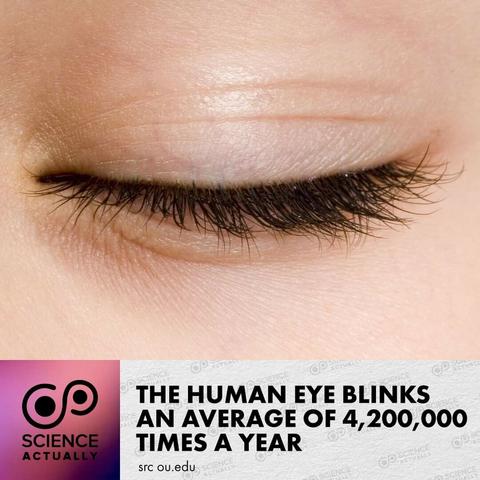The chosen color for most night vision devices is green, because the human eye can distinguish more shades of green than any other color.
Despite its lack of blood vessels, the cornea can heal relatively quickly from minor injuries because of its rich supply of nerve endings and access to nutrients from surrounding fluids.
What's the Frame Rate of the Human Eye?
Have you ever wondered what the frame rate of the human eye is and, just importantly, why it matters? It turns out the answer is far more complex than a simple numerical value, and that has tremendous consequences for the design of cameras and why we work the way we do. This neat and informative video takes you behind the scenes of the science behind how the eyes sees to discuss the topic and the implications it has for filmmakers. Coming to you from Filmmaker IQ, this great video discusses the frame rate of the human eye.
The eyes have it: A self portrait.
UK paliamentary word-play...
Can you tell I'm bored with work this afternoon?
#BlackAndWhitePhotography #Monochrome #iPhonePhotography #SelfPortrait #HumanEye
Referenced link: https://medicalxpress.com/news/2022-12-ai-human-eye-brain-metastasis.html
Discuss on https://discu.eu/q/https://medicalxpress.com/news/2022-12-ai-human-eye-brain-metastasis.html
Originally posted by Phys.org / @physorg_com@twitter.com: https://twitter.com/medical_xpress/status/1604957837104500737#m
RT by @physorg_com: AI better than #humaneye at predicting brain metastasis outcomes, find researchers https://ieeexplore.ieee.org/document/9938981/ https://medicalxpress.com/news/2022-12-ai-human-eye-brain-metastasis.html
AI better than human eye at predicting brain metastasis outcomes, find researchers
A recent study by York University researchers suggests an innovative artificial intelligence (AI) technique they developed is considerably more effective than the human eye when it comes to predicting therapy outcomes in patients with brain metastases. The team hopes the new research and technology could eventually lead to more tailored treatment plans and better health outcomes for cancer patients.
